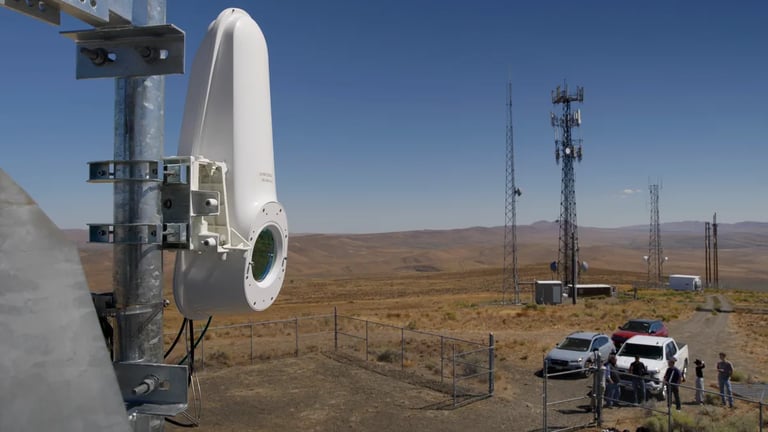Google's Taara Revolutionizes Rural Broadband with High-Speed Wireless Data Transmission
August 27, 2025
Compared with trenching and fiber deployment, Taara offers faster, potentially cheaper middle-mile solutions in rugged terrain, where fiber costs can exceed $100 per foot.
A visit to a Selah, Washington Taara terminal shows how the system links local fiber to a cell site, illustrating a concrete path to delivering high speeds without digging new fiber trenches.
Taara is a wireless data transmission tech that uses infrared and visible light (FSO) to push data downstream and upstream at up to 20 Gbps over distances reaching about 12.4 miles, offering a potential bypass around difficult fiber deployments.
Operating around 190 THz—the same general frequency band as fiber—Taara conveys data wirelessly with no physical cable, sitting in a space where fiber economics are hard to justify.
The piece takes an informative, exploratory tone, presenting balanced quotes from supporters and independent analysts to weigh Taara’s promise against its uncertainties.
Policy and funding context matters: the BEAD program and federal subsidies are accelerating rural broadband, and Taara could speed up middle-mile connections as part of broader deployment strategies.
Key people and places include Taara (Google/Alphabet X), CEO Mahesh Krishnaswamy, and sites like Selah, Washington, including the Yakima Valley and StarTouch in the broader ecosystem, with ITU data and BEAD funding shaping the story.
FSO has roots dating back decades, but Taara stands out through field deployments and partnerships with ISPs like StarTouch in Washington, signaling practical adoption beyond experiments.
Looking ahead, Taara aims for scalable, ultra-high bandwidth using multiple lasers, though industry debate continues about real-world performance and how it stacks up against fiber in the long run.
Operational challenges include beam disruption from birds, wind, fog, and rain; mitigations involve RF backups and stabilization tech to counter tower sway.
Summary based on 1 source
